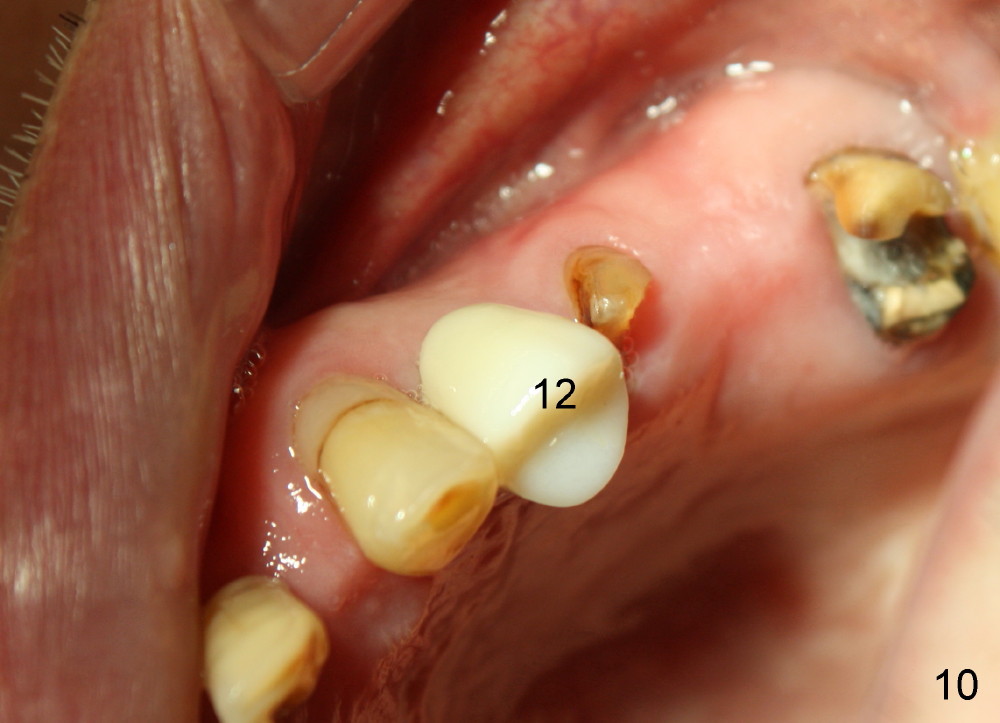









 |
 |
 |
 |
|
 |
 |
|
|
 |
 |
 |
 |
||
The First Case of Implant Failure: No Primary Stability
The 82-year-old male patient is a bruxer. The porcelain-fused-to metal crown of the tooth #12 (Fig.1 C) fractures (Fig.2). One month after extraction (Fig.3 arrowheads: healing socket), a 4.5x17 mm tapered implant is placed without primary stability (Fig.4: I). The last osteotome used to form osteotomy is 5x17 mm. The mistake is due to using a new implant system and technique. Two weeks later, an abscess (Fig.5: A) develops around the implant. Finally the implant falls out by its own. Two to three months later, a 5x20 mm round implant is placed (Fig.6: I) with high torque. Eight months later, a new crown is cemented (Fig.8,9: C).
It appears that the size matters. Two years post cementation of #12 implant crown, the tooth #18 of this gentleman has endo failure. A large immediate implant is placed without complication.
Fig.10,11 show the #12 implant in function 2 years 8 months whereas the neighboring fixed partial denture (#13-15) is broken. In fact the crown at the site of #12 has been changed to Zirconia due to bruxism (Fig.11 C, as compared to PFM in Fig.8). An implant is placed at the site of the pontic (Fig.11: #14) first. By the time the implants at the sites of #13 and 15 osteointegrates, the implant at the site of #12 has been in function for 3 years 4 months (Fig.12).
Implant Fails, Long-Termed Follow Up
Xin Wei, DDS, PhD, MS 1st edition 07/24/2011, last revision 06/21/2015